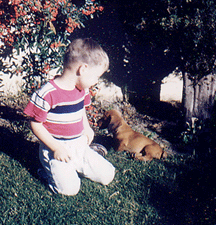On a recent Facebook list I made the statement that 80% of dogs taken to shelters (excluding strays that are returned to their owners – the actual purpose of a county “pound”.) don’t survive. That is because about 80% of all dogs born each year do not see their first birthday. If they did, we’d have over billion dogs in this country – but we don’t. If you think my numbers are wrong, let’s use that trite cliché , do the math, and see what we come up with. Before we get started, the SPCA says there are 7.5 million animals of all types taken to shelters each year. That equates to about 5% of the total number of animals in this country. That means that all the billions spent on municipal and private shelters only covers 5% of the total population – if you believe the humane groups. If only 5% are at risk, that means that 95% aren’t. In even totalitarian societies, 95% compliance with any directive is about as good as you can get. Both Soviet Russia and Red Communist China tried to ban pet sales and ownership with punishments up to death. It didn’t work in either country. Meaning if we have 95% compliance in a free society, a humane “movement” is no longer necessary. But I digress…
Untruth in Numbers: Why current pet overpopulation numbers may be unreliable
Note: This was first published as a feature article in DogFancy magazine.
If you are an animal lover, there is a good chance that you are on the mailing list of at least one animal welfare group. Periodically you probably receive a form letter from an organization that wants you to help stop pet overpopulation. The computer-generated letter includes a personalized greeting, a simulation of the spokesperson’s signature, pictures of either adorable puppies and kittens or abused, emaciated dogs and cats – and lots of statistics. The obvious purpose of the photographs is to gain your sympathy. The statistics are there to prove that there is a real problem with animal overpopulation and that this particular group is the one most worthy of your support. Your generous donation will help these nice people solve the overpopulation problem and help the animals – or will it?
Chump Change, small potatoes, nickel and dime:
I love the English language. My mother had serious disabilities from a dubious back surgery for a couple of years. I was a very active 3 ½ year old little boy. She was stuck with bed-rest and couldn’t even go down the steps into our backyard. (The little Demon with his first dog, Rusty. A contemporary photo) I  would taunt her as she stood on the steps and demanded that I come in the house. What’s a mother to do? Teach the little demon how to read. She would lie in bed and hold the book for me as we went from one word to the other. I loved looking at words and finding their secrets. I am the proud owner of a 1908 unabridged Webster’s, leather bound library dictionary, well worn. I still read it.
would taunt her as she stood on the steps and demanded that I come in the house. What’s a mother to do? Teach the little demon how to read. She would lie in bed and hold the book for me as we went from one word to the other. I loved looking at words and finding their secrets. I am the proud owner of a 1908 unabridged Webster’s, leather bound library dictionary, well worn. I still read it.
Commands and Signals Revisited:
Ivan Pavlov, the great Russian physiologist, said that in order to survive, animals must have a way to identify beneficial and harmful events before they actually occur. More simply, he said that if a dog had to wait for the claws of a bear to sink into his flesh before he reacted to the threat, there would be no dogs. Likewise, if animals could not learn that thunder in the distance preceded a flash flood or that the snap of a twig preceded a succulent deer, they would be unable to avoid harmful events or take advantage of available entrees. If these examples sound far to simplistic for great science, think again. Sometimes the very best scientific information helps us build secure foundations for more complex knowledge. In the case of Ivan Pavlov, the diligence of his work pays off big-time for anyone interested in the most fundamental of dog training skills.
Abuse or Not Abuse, That is the Question:
About 15 years ago, I spoke at a conference of one of the largest dog training professional organizations. I gave a demonstration of how to safely and quickly stop food aggression. My demonstrator for the event was a five-year-old German Shepherd – not just any German Shepherd. This dog was a FEMA certified search dog. Her problem was that as she grew older, she started attacking any dog that came near while there was food present – which in most cases was another search dog.
